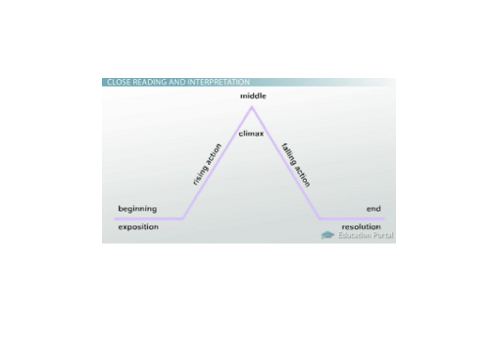In this lesson, we will examine the steps involved in the basic analysis of literature. Then, using a well-known fable, we will go through each step of analysis: comprehension, interpreting and drawing conclusions.
Introduction
Analyzing literature. Kind of scary, right? It doesn't have to be. In fact, you're probably a pro at analysis already - you're analyzing text all of the time: when you read a newspaper article, dissect a cooking recipe, and even when you follow driving directions.
In order to get from point A to point B in your car, for example, you need to understand the map, the written directions as a whole, as well as all of the individual parts or turns. It often helps you to figure out which areas might trip you up and from what direction of town you should approach your destination. That's all analysis is.
Analyzing literature is much like reading directions. First, you tackle literature by reading it once forcomprehension.
- Does it make sense as a whole?
- Do you understand the events that lead from the beginning to the middle to the end - the basic plot?
- Are there important parts of the puzzle that you need to recognize?
Once you are steady on your feet with comprehension, you move on to interpretation, which really means filling in the pieces of the puzzle that are not explicitly stated. Look more closely at the details that fit the literary work together. Examine things like mood and tone of a scene or character motivation in a specific moment.
Finally, once you feel like you've painted a clear portrait in your head through story comprehension and personal interpretation, you pull all of this information together to create an analytical statement about the piece as a whole. This can include things like theme, author commentary or choices, overall character analysis, how literature reflects a time period, etc. - really, the list of possible topics for overall analysis is endless, and not everyone will interpret the same work in the same way. It is drawing conclusions about a work based upon the story's elements, and while there's no one right way to do it, following the steps in this video can help you get started until you develop a method that works for you.
Don't feel intimidated. For the purposes of our work here, we will look more generally at what close reading, making connections, and drawing conclusions really means. You already do a lot of this without realizing it.

Comprehension
You know what comprehension means. You read a literary work once to figure out how all of the basic parts fit together as a story. Essentially, it's the basic understanding of:
- Setting
- Characters
- Plot (to the extent that they are revealed)
You think you can do this? Let's practice. For this exercise, we are going to keep things simple with a short version of everyone's favorite, 'The Tortoise and The Hare' :
The Tortoise and the Hare
The hare was once boasting of his speed before the other animals. 'I have never yet been beaten,' said he, 'when I put forth my full speed. I challenge anyone here to race with me.'
The tortoise said quietly, 'I accept your challenge.'
'That is a good joke,' said the hare. 'I could dance around you all the way.'
'Keep your boasting until you've beaten,' answered the tortoise. 'Shall we race?'
So a course was fixed and a start was made. The hare darted almost out of sight at once, but soon stopped, and, to show his contempt for the tortoise, lay down to have a nap. The tortoise plodded on and plodded on, and when the hare awoke from his nap, he saw the tortoise nearing the finish line, and he could not catch up in time to save the race.
Plodding wins the race.
So, these initial steps should be somewhat familiar to you already.
Step One - Setting Comprehension
Is the setting clear in this one? Hmm. It doesn't give a specific location or a time period, so this isn't initially clear. 'No basic setting.'
Step Two - Character Comprehension
That's easy. 'The Hare' and 'The Tortoise.'
Step Three - Plot Comprehension
You can do this. Easy. 'The fast hare challenges other animals to a race. The slow and steady tortoise accepts the challenge. The hare, who is confident in his abilities, decides to take a nap on the course. As a result, he loses.'
Nice work. Now, on to interpretation.
Close Reading and Interpretation
Interpreting a literary work is the point at which you begin to fill in the pieces of the story a bit more. You explore setting, characters, and plot more deeply while giving consideration to author's style and language. Let's start with setting again. Look back at t